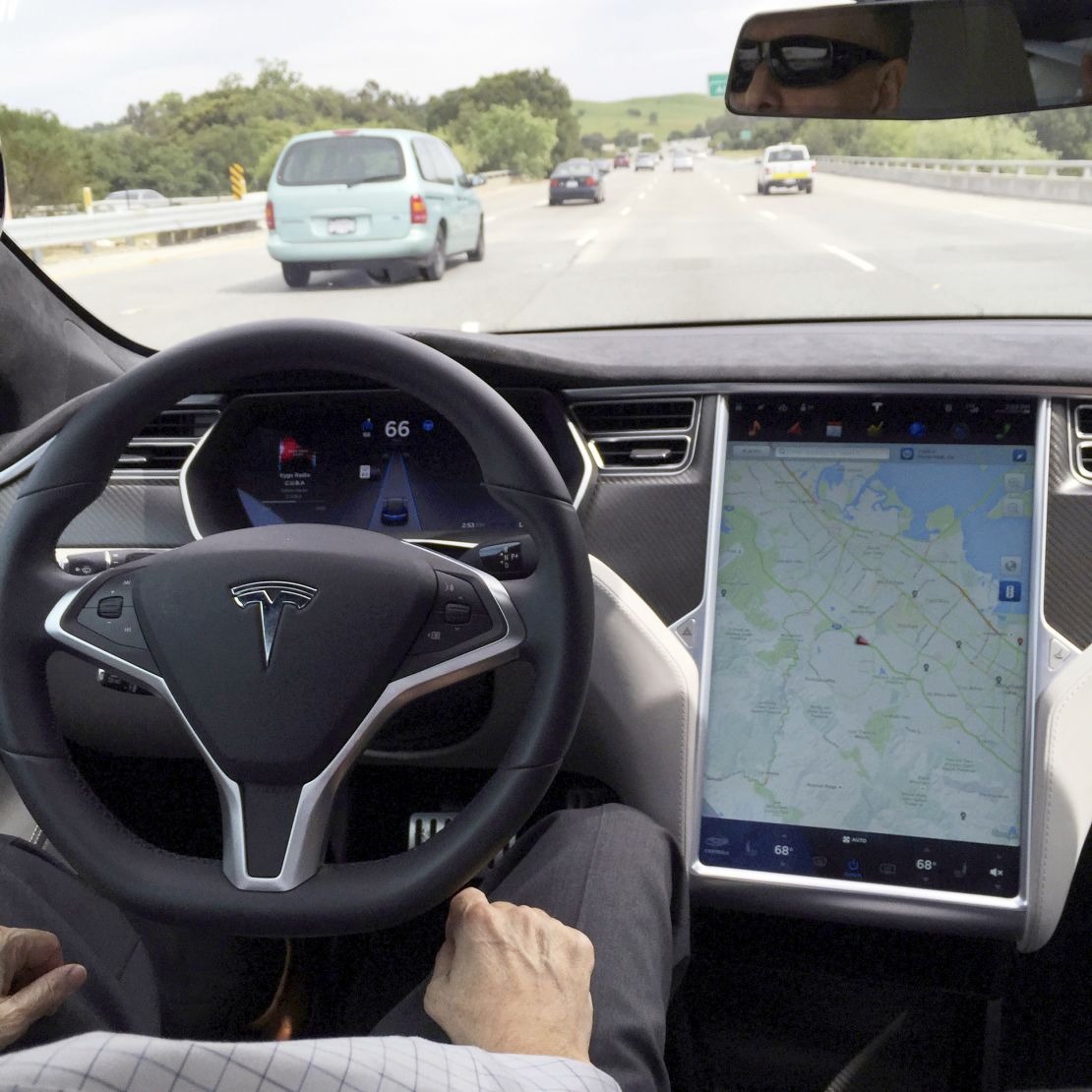Drivers are putting too much trust in their vehicles’ driver-assist features, which may lead to dangerous situations, according to the Insurance Institute for Highway Safety (IIHS).
The organization, which researches vehicle safety, released a study Tuesday finding that 53% of General Motors’ Super Cruise users, 42% of Tesla Autopilot users and 12% of Nissan’s ProPilot Assist users were comfortable letting the system drive the vehicle without them watching what was happening on the road. Some even described being comfortable letting the vehicle drive during inclement weather and in parking lots.
These systems are all driver-assist features that combine adaptive cruise control and lane-keeping systems, primarily to keep a car in a lane and following traffic on the highway. They all require an attentive human driver to monitor the road and take full control when called for. The IIHS did not survey owners of other systems with similar capabilities, like Ford’s BlueCruise.
The systems the IIHS examined all have some differences, as Super Cruise is labeled “hands-free” and is restricted to certain highways for which GM has approved it. ProPilot Assist is only for highways, and Tesla’s Autopilot can be used on a broader range of roads, but both require drivers to keep their hands on the wheel. GM is quicker than Tesla at temporarily restricting access to the software when it deems a driver is inattentive.
The automakers caution drivers about their system’s limits. Tesla notes that “current Autopilot features require active driver supervision and do not make the vehicle autonomous.” GM tells drivers to “always pay attention while driving,” and Nissan says ProPilot Assist “is not a self-driving system.”
Yet confusion remains.
“Early adopters of these systems still have a poor understanding of the technology’s limits,” IISH President David Harkey said in a statement.
Drivers with a flawed understanding of the vehicles’ abilities may be less ready to control their vehicles whenever needed. The IIHS called for automakers to design these driver-assist features to promote proper use.
GM told CNN Business in a statement that a driver using SuperCruise is “responsible for operating the vehicle in a safe manner and must remain attentive to traffic, surroundings, and road conditions at all times.”
“Nissan is clearly communicating ProPilot Assist as a system to aid the driver, and it requires hands-on operation,” Nissan said in a statement. “The driver maintains control of the vehicle at all times.”
Tesla did not respond to a request for comment, and does not typically engage with the professional news media.
The importance of staying vigilant was highlighted as drivers reported to IIHS that the systems sometimes do unexpected things that require driver intervention. Nearly half of Tesla Autopilot users (48%) surveyed, a quarter of Super Cruise users and 23% of ProPilot Assist users said their system had done something unexpected that required their intervention.

The National Highway Traffic Safety Administration is investigating Tesla’s driver-assist features for braking “without warning, at random, and often repeatedly in a single drive.”
The IIHS found that it was common for drivers to be engaged in activities that involved taking a hand off the wheel during these moments. Activities include eating, drinking, texting, using a smartphone or reading a book, magazine or newspaper.
Drivers were more likely to conduct non-driving tasks like these when using the driver-assist features. All three systems examined steer the vehicle within a lane and keep up with traffic.
The researchers found that GM Super Cruise users were more likely to report looking away from the road for extended periods of time than users of Tesla’s Autopilot or Nissan’s ProPilot Assist.
The findings were based on phone and online surveys of roughly 600 regular users of SuperCruise, Autopilot and ProPilot Assist.
The US government has set no standards for these features, which are some of the newest technologies on vehicles today. Cadillac and Nissan first released their systems in the last five years. Tesla’s Autopilot was introduced on vehicles in 2015.
Tesla’s driver-assist system, which it calls “full self-driving” has received much scrutiny over the years as auto safety experts say the name is misleading and risks worsening road safety.








